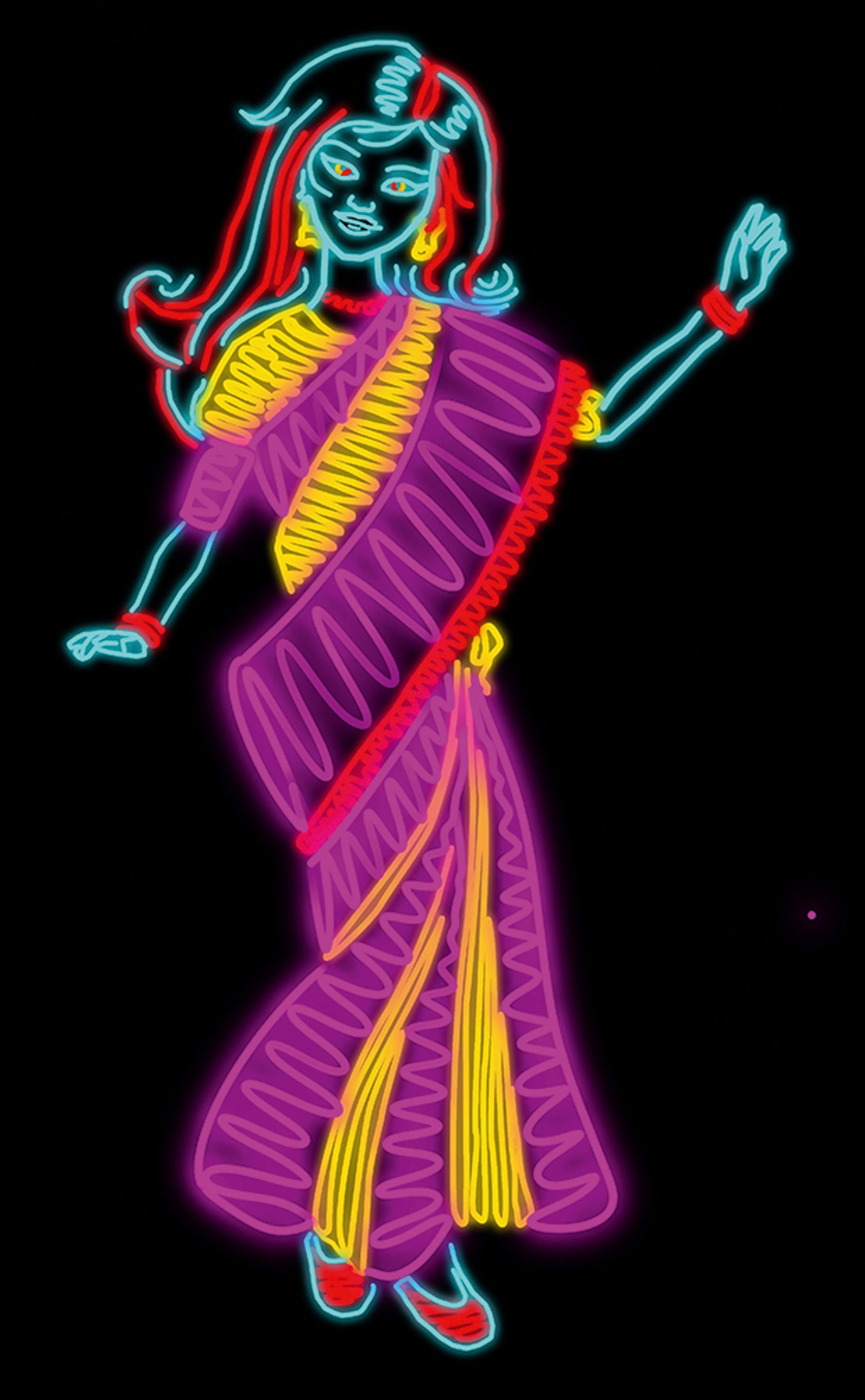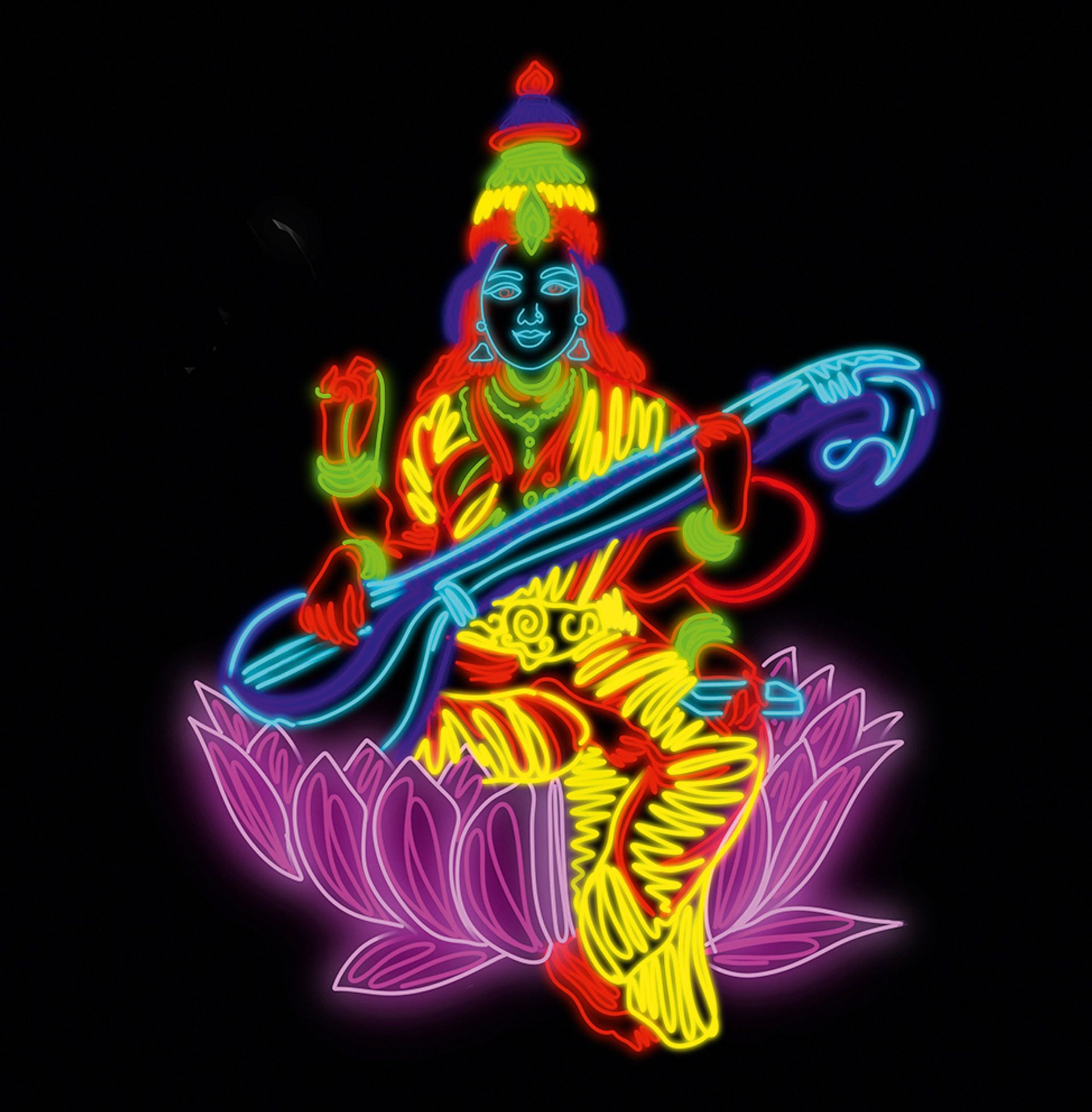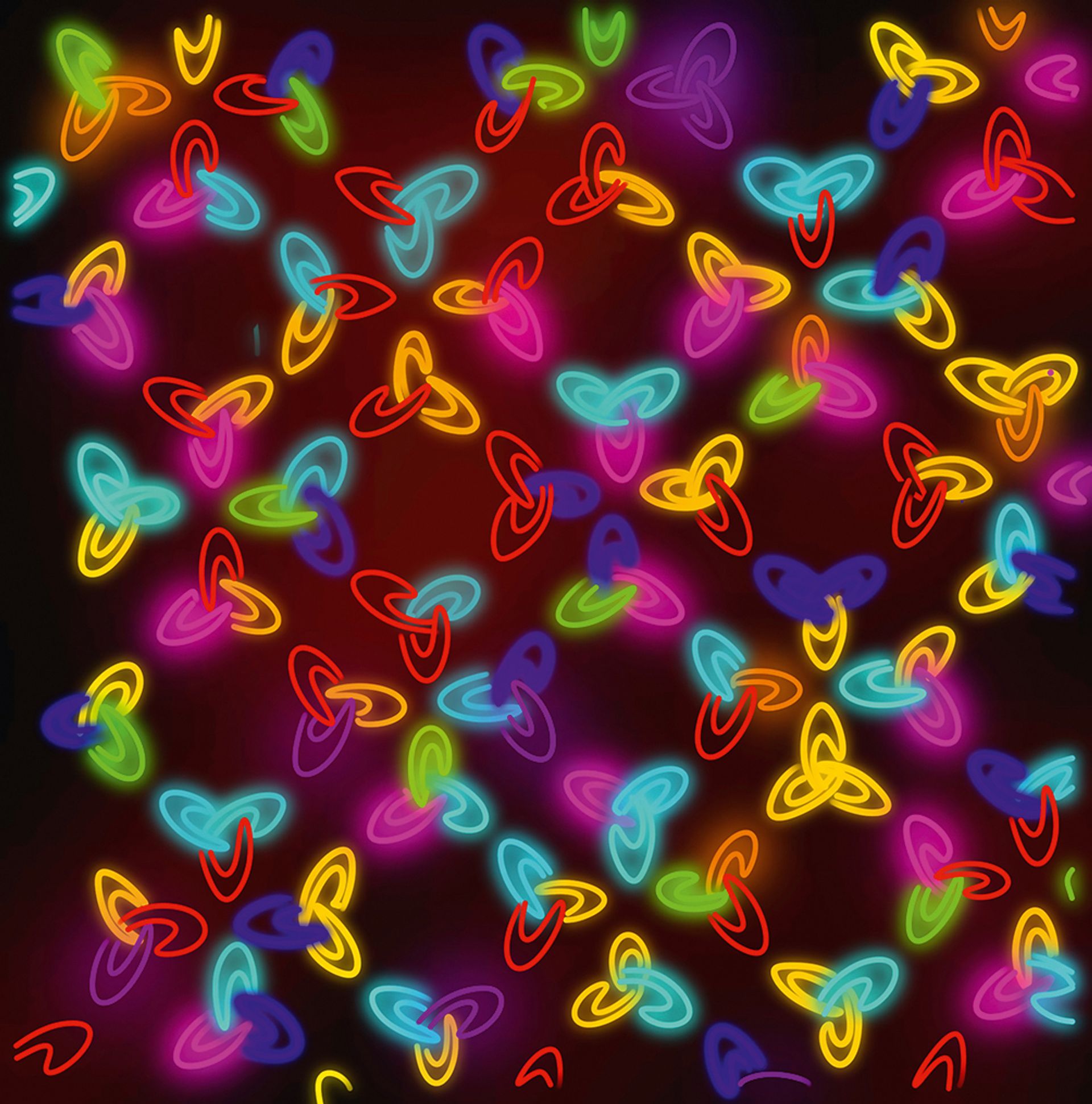Born in Liverpool to Punjabi parents, Chila Kumari Singh Burman has explored her British-Indian heritage and played with and off ideas around Asian femininity for more than 40 years. She is now best known for her works in neon, most notably bathing Tate Britain’s façade in an illuminated extravaganza that was seen by many as a beacon of hope during the early days of Covid-19. However, Burman also works in a range of media, spanning painting, printmaking, collage, photography, film and performance in an exuberant mash-up of Bollywood bling and Pop art, shot through with lashings of colour, glitter and a refusal to be constrained within a single approach or interpretation.

Let there be light: Chila Kumari Singh Burman created Barbie inna Sari for the three-night West End show during Frieze London
© Chila Kumari Singh Burman
Burman was a member of the British Black Arts Movement in the 1980s and one of the first South Asian women to make political art in the UK, and her work remains infused with messages of female empowerment. During Frieze she has been commissioned by Art of London to light up the West End for three nights from 10 to 12 October. Her work is also at present on show at Holburne Museum in Bath, and she has a substantial exhibition opening at Compton Verney at the end of this month.
The Art Newspaper: How are you lighting up the West End during Frieze week?
Chila Kumari Singh Burman: It’s a commission of eight new neon pieces for Leicester Square Gardens, each one more than two metres across, and also another six or so works that I’d made previously that will be shown throughout the surrounding area. The works in Leicester Square respond to the West End’s bright, brash razzamatazzy lights that so struck me when I first came to London. Both my parents are from the Punjab and many motifs reference my Indian-Punjabi heritage. In these new works I’ve included the Hindu deities Ganesh and Lakshmi because it’s Diwali at the end of the month. Lakshmi is the goddess of Diwali, who brings wealth, prosperity and grace. I’ve also made a very elegant Indian girl covering her head with a dupatta and for the first time I’ve also created a Barbie in a sari. Other works showing shells, fish and corals are inspired by the base of the Eros statue [in Piccadilly Circus] and I’ve made abstract neons that combine Islamic and Celtic patterns.
Were you given a brief?
No, I had full rein. I can’t follow a brief. I’ve always rebelled against being told what to do. Give me a brief, and I’ll turn it upside down. I’m a Punjabi Scouser and the upbeat, defiant Liverpudlian humour is also reflected in these works.

Lotus Laxmi , one of eight new neon pieces installed in Leicester Square Gardens this week
© Chila Kumari Singh Burman
Since lighting up the façade of Tate Britain during the first lockdown you have become renowned for your work in neon. But you actually trained as a printmaker and use a wide range of media, from acrylic paint to plastic spoons and stick-on bindis.
I deliberately covered the bases of the Leicester Square works with full-on collaged images because I don’t want to be defined as a neon artist. Collaging and shaping reality through cutting up and reappropriating unrelated images in the anarchic spirit of Dada is integral to my process. Themes of order and chaos are ones I keep returning to.
After their three days in Leicester Square, the works are going on show as part of a major exhibition of new work in multiple media made over the last four years, which goes on show at the end of October at Compton Verney in Warwickshire.
As this show opens during Diwali, there will be a lot of neon deities all over Compton Verney’s façade—but I am also covering its four external pillars with dense collages. Then, in the first of the five rooms I have made a beautiful new series of etchings, some based on the body prints I made in the late 1970s. I’m also going to be making some body prints directly on to the gallery walls, which will be mad!
Compton Verney was set up as a gallery by Peter Moores and I’m so happy to be showing there because my dad was big mates with his father, John Moores, who used to buy ice-cream from dad’s van on Freshfield Beach in Formby. As a teenager, when I wasn’t working in my dad’s ice-cream van after school, I used to walk through Formby knocking on people’s doors with forms for them to fill in for the Littlewoods football pools [a gambling game, popular before the 1990s], which John Moores founded. So it’s especially important that at Compton Verney I’m showing a sculpture of my father’s ice-cream van—the one which I took to the World Cup in Qatar—along with my neon version of the tiger that sat on top of dad’s van, which I showed outside at Tate Britain.
You’ve described your work as “all blinged up with a razor-sharp political awareness” and ever since your early days at Leeds Polytechnic right through to your participation in the British Black Arts Movement of the 1980s and your more recent subversions of the bindi and the idea of marriage, there has always been a serious socio-political undertow to everything you make.
I use adornment but with a message, and since the 1980s I’ve been exploring the experiences and aesthetics of Asian femininity, which has often involved me playing with the formal properties of “girly” accessories—bindis, bras, flowers, jewellery and makeup—to explore gender and race. I like to take the idea of Arte Povera and recycled materials one feminist step further by using cheap, pretty stuff that wouldn’t usually be considered worthy of consideration. I think I might stick a few bindis here and there on my body prints on the walls of Compton Verney.

Neon Knots is more than two metres wide
© Chila Kumari Singh Burman
Your work is also currently shining across the façade of the Holburne Museum in Bath, and in its grand ballroom there is a white neon tiger, which strikes up an interesting conversation with the colonial portraits in the adjoining galleries.
The two neon trees attached to the pillars on the Holburne’s balcony are my biggest pieces to date. They have bees buzzing in and out, which reminds us of the way in which trees are being cut down and bees are becoming extinct, and we can’t survive without either. I remember that near the beach at Formby, there were astoundingly beautiful trees and you also see the most gorgeous trees in Indian miniatures. As well as being rooted in my childhood memories of the Bengal tiger figurine attached to the roof of my father’s ice-cream van, I also see the white tiger Janu in the ballroom as symbolising my father’s bravery and cultural diversity, as well as the animal’s ability to survive, despite human intervention. All of this inspires my creative process.
How do you feel about being chosen to be the inaugural show to mark the reopening of Tate Liverpool in 2026?
I’m so made up: they’re bringing me back home.
• Chila Kumari Singh Burman: Neon Dreams, Holburne Museum, Bath, until 12 January 2025
• Chila Kumari Singh Burman: Spectacular Diversions, Compton Verney, Warwickshire, 26 October-26 January 2025


